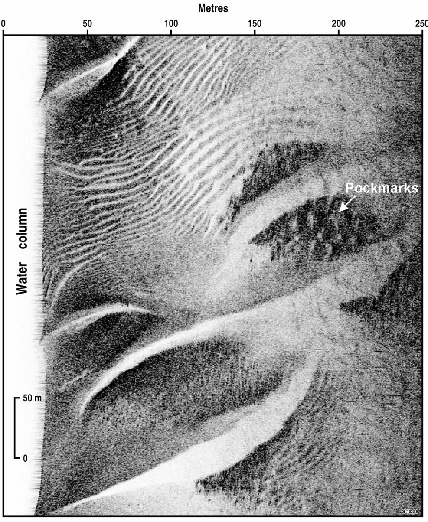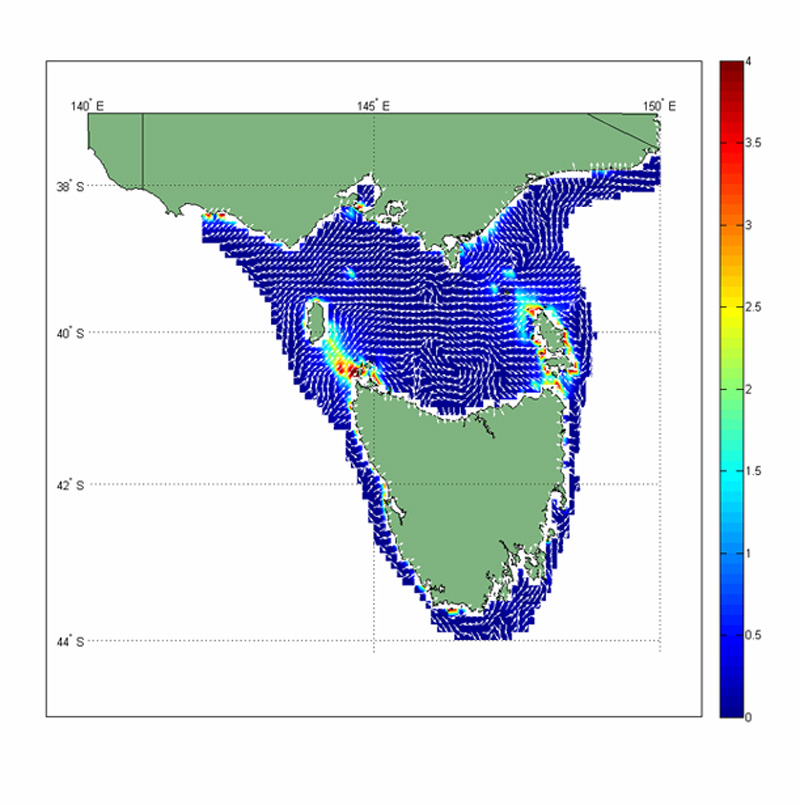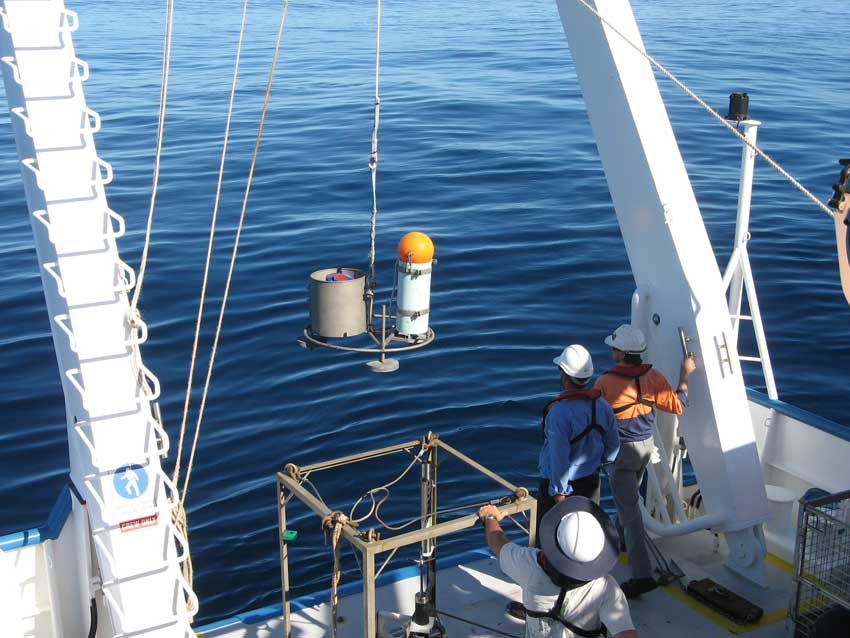Oceanography
Last updated:7 June 2023
Oceanography is the study of the composition and motion of the water column and the processes which are responsible for that motion. The principal oceanographic processes influencing Australia's continental shelf waters include waves and tides as well as wind-driven and other oceanic currents. Understanding the oceanography of Australia's shelf waters and the influence this has on seabed dynamics, contributes to a wide range of activities within Geoscience Australia's work program. They include:
- assessment of offshore petroleum production infrastructure
- seabed mapping and characterisation for environmental management
- marine biodiversity surrogacy research
- assessment of renewable energy potential.
When the physical processes described above drive water motion over the continental shelf they produce a shear stress at the seafloor. This bed shear stress is directly or indirectly responsible for sediment transport and sorting as well as the development of bedforms (Figure 1) and the erosion and accretion of the seabed to produce elevation changes. These responses are termed seabed dynamics. Bed shear stress can place physical limitations also on the benthic species present, influence ecological processes and contribute to benthic biodiversity through ecological disturbance.
Geoscience Australia's focus is at a national scale, thus requiring a numerical modelling approach. The GEological and Oceanographic Model of Australia's Continental Shelf (GEOMACS) is its data generation tool. This model provides an estimation of the past interaction of waves, tides and ocean currents to produce an 11-year time series of bed shear stress on a 0.1 degree grid for the shelf (<300m water depth). This extensive and detailed data set can be analysed in a variety of ways to investigate problems of interest (Figure 2).
GEOMACS is partially verified and the seabed stress and sediment dynamics data base is augmented on an opportunistic basis using oceanographic moorings which included a variety of acoustic current meters and optical backscatter sensors (Figure 3).


